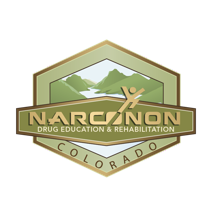The Children Born Addicted to Opioids

With all of the attention that is being placed on the overdose death rates across the United States little to no attention is being given to the youngest victims of this crisis. Every day across the United States children are being born addicted to opioids. Opioid withdrawal for anyone is a grueling process but even more so for someone who has just been brought into the world.
Infants who are born to mothers that are addicted to opioids will undergo opioid withdrawal which is also referred to as neonatal abstinence syndrome (NAS). Even the children of women who were taking prescribed opioid medication for legitimate medical purposes under the supervision of a doctor may experience NAS. According to a report published by the Official Journal of The American Academy of Pediatrics, there is on average one newborn diagnosed with NAS in the United States every 15 minutes which results in an average of 32,000 infants per year. In 2014 the associated medical costs to care for these children equaled out to around $563 million.
Withdrawal symptoms in newborns usually begin between 48-72 hours after birth and may include:
- Seizures
- Tremors
- Irritability
- Sleep problems
- Difficulty feeding
- Increased sweating
- Respiratory distress
- Vomiting
- Hyperactive reflexes
- Dehydration
Infants who experience NAS require a longer hospital stay, have a higher rate of readmission and are more likely to need care from the Neonatal Intensive Care Unit (NICU) than infants born without NAS.
Opioid use during pregnancy can impact both women and their babies. Negative consequences of opioid use during pregnancy can include maternal death, birth defects, stillbirth, preterm birth and neonatal abstinence syndrome. The long term effects on children who are born addicted to opioids are still largely unknown. Recent studies have shown that children with a history of NAS are more likely to experience developmental delays later on in life than children without a history of NAS.
Many school districts are beginning to experience an influx of students who are struggling with developmental delays due to NAS. While there has been an increased amount of children who are born addicted to drugs there has not been an increased amount of training on how to deal with the educational challenges that this situation presents. This is an issue that needs to gain more public attention as many pharmaceutical companies begin to face lawsuits and establish financial settlements.
If we are going to demand that Big Pharma help pays for the mess they created then we need to make sure they are helping all of those who have been affected. More funds need to be made available to help cover medical costs that are associated with caring for infants undergoing NAS. A large portion of these bills are being paid for by Medicaid which is funded by taxpayers however, in my opinion, it would make more sense for Big Pharma to be paying these bills instead.
Many communities will also need more financial support to be made available to the educational systems that are working hard to help children who are experiencing developmental delays due to NAS. It would only be fair for pharmaceutical companies to have to help pay for the extra training and resources that are needed to provide an equal opportunity to the children whose lives have been affected by opioid use through no fault of their own.
Resources:


